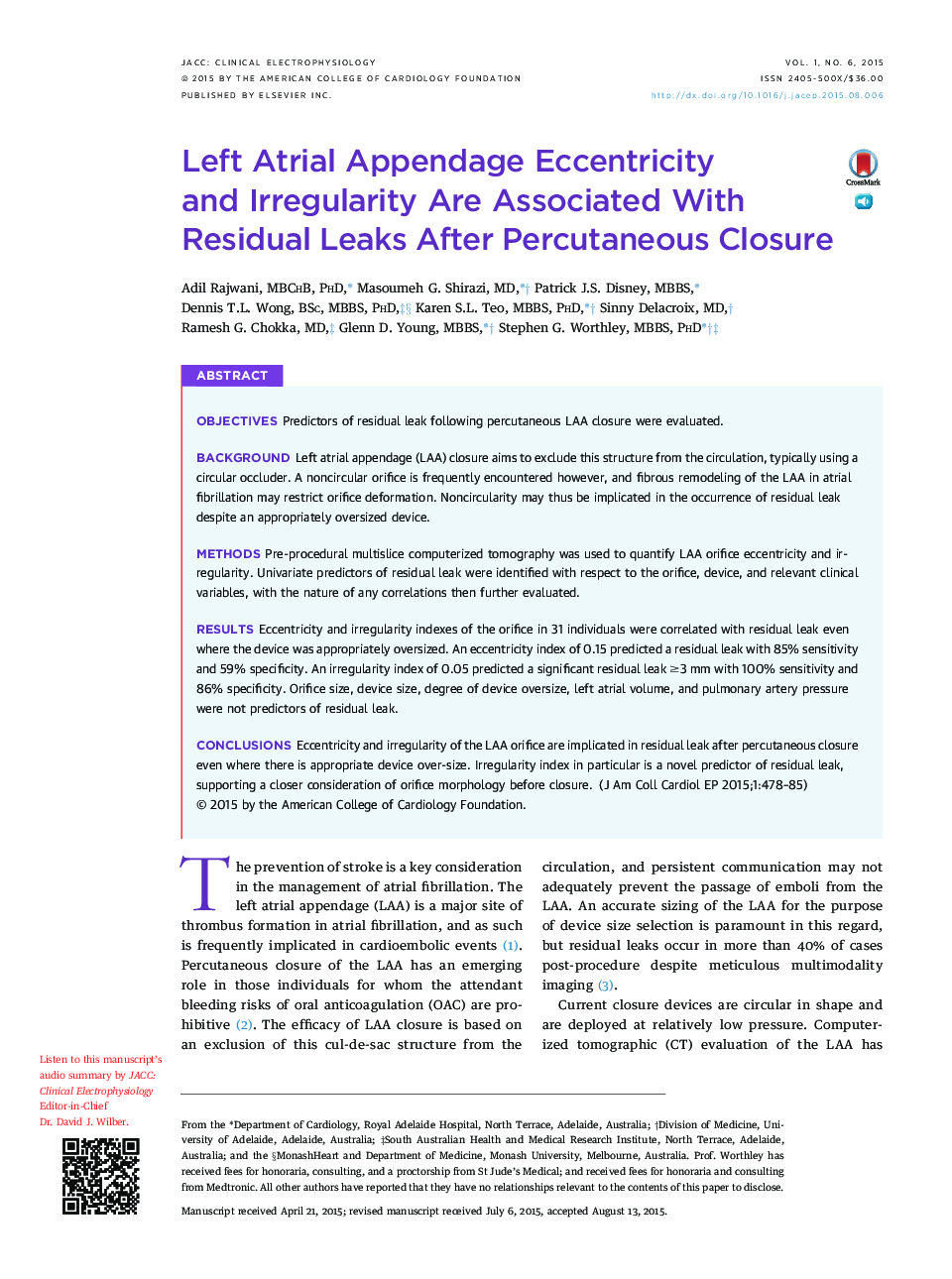| Article ID | Journal | Published Year | Pages | File Type |
|---|---|---|---|---|
| 2942263 | JACC: Clinical Electrophysiology | 2015 | 8 Pages |
ObjectivesPredictors of residual leak following percutaneous LAA closure were evaluated.BackgroundLeft atrial appendage (LAA) closure aims to exclude this structure from the circulation, typically using a circular occluder. A noncircular orifice is frequently encountered however, and fibrous remodeling of the LAA in atrial fibrillation may restrict orifice deformation. Noncircularity may thus be implicated in the occurrence of residual leak despite an appropriately oversized device.MethodsPre-procedural multislice computerized tomography was used to quantify LAA orifice eccentricity and irregularity. Univariate predictors of residual leak were identified with respect to the orifice, device, and relevant clinical variables, with the nature of any correlations then further evaluated.ResultsEccentricity and irregularity indexes of the orifice in 31 individuals were correlated with residual leak even where the device was appropriately oversized. An eccentricity index of 0.15 predicted a residual leak with 85% sensitivity and 59% specificity. An irregularity index of 0.05 predicted a significant residual leak ≥3 mm with 100% sensitivity and 86% specificity. Orifice size, device size, degree of device oversize, left atrial volume, and pulmonary artery pressure were not predictors of residual leak.ConclusionsEccentricity and irregularity of the LAA orifice are implicated in residual leak after percutaneous closure even where there is appropriate device over-size. Irregularity index in particular is a novel predictor of residual leak, supporting a closer consideration of orifice morphology before closure.
